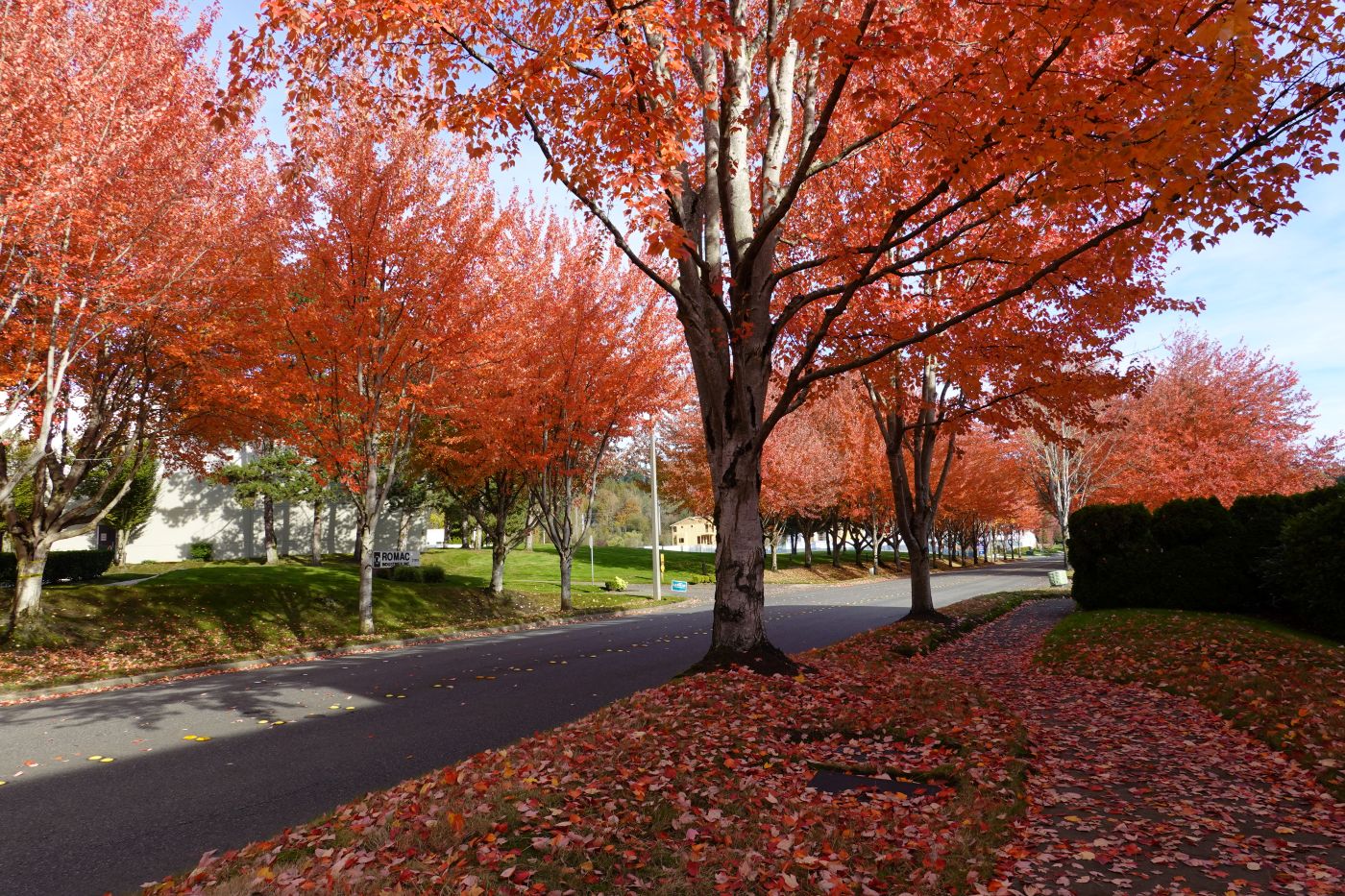I have spent the last few weeks immersed in trees. I have read about them, talked about them, watched videos about them and even just stood and looked at them. After all that, I feel like I now know just how little I REALLY know about trees —- especially which ones are great residential options. The truth is that there are lots of factors to consider when selecting trees for your yard.( See our last article. Fall Is for Trees for a detailed look at what you need to consider before purchasing and planting a tree. )
Since there are so many choices on the market today, some good and some poor, I thought it would be wise to ask some actual experts what their personal choices would be for residential tree planting. Here’s what they came up with: I’m sure that their ideas will be a tree-mendous help.
Red Maple (Acer rubrum)
A classic native tree with brilliant red fall foliage, thriving even in wetter soils and urban conditions. ‘Brandywine’ for bright red foliage that shifts to purple-red in late season.
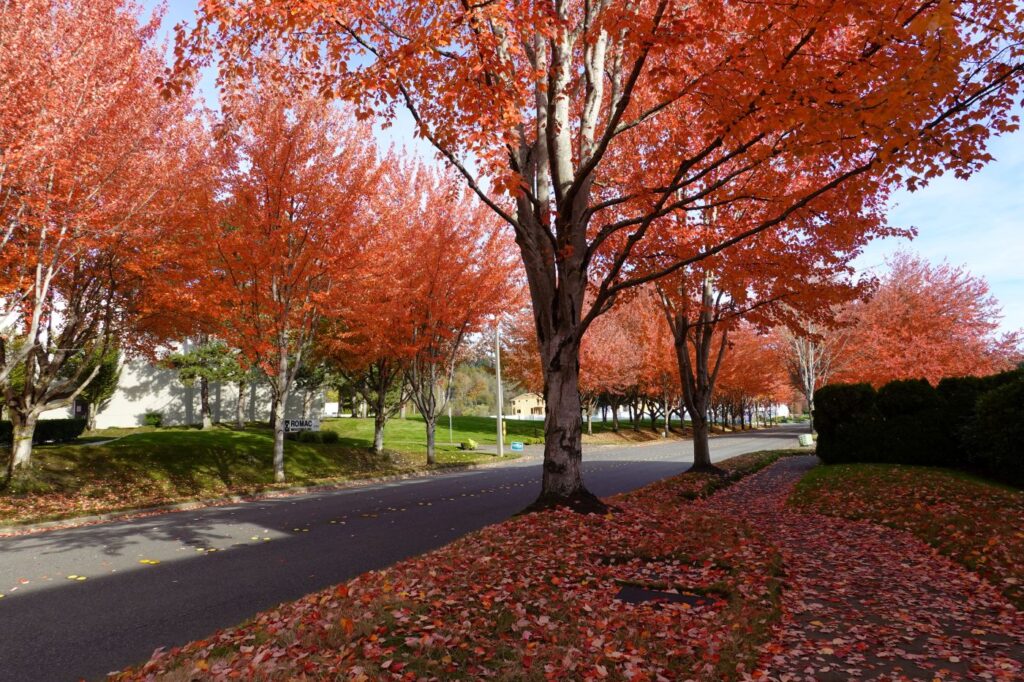
- Zones: 4–9
- Height/Spread: 35–50 ft tall, 25–40 ft wide
- Soil/Water: Average soil; medium to wet conditions
- Bloom: Insignificant
- Fall Color: Deep red
- Tolerates: Wet soil, air pollution
- Native Range: Eastern North America
Sugar Maple (Acer saccharum)
Known for vibrant orange-red autumn color and excellent shade; hardy and long-lived.
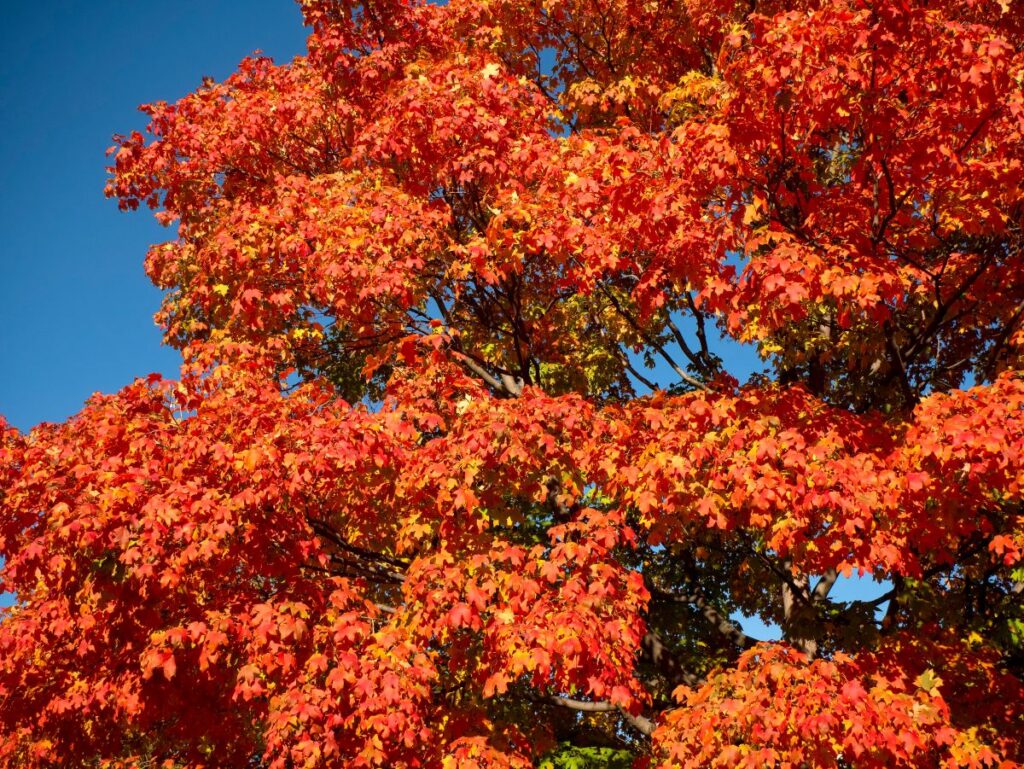
- Zones: 4–8
- Height/Spread: 40–60 ft tall, 25–45 ft wide
- Soil/Water: Average soil; medium water
- Bloom: Yellowish-green
- Fall Color: Orange to red
- Tolerates: Drought when established
- Native Range: Eastern United States
- Look for: ‘Green Mountain’ noted for rapid growth and hardiness.
Red Oak (Quercus rubra)
A stately, fast-growing oak that tolerates drought and pollution, with rich reddish-brown fall color.
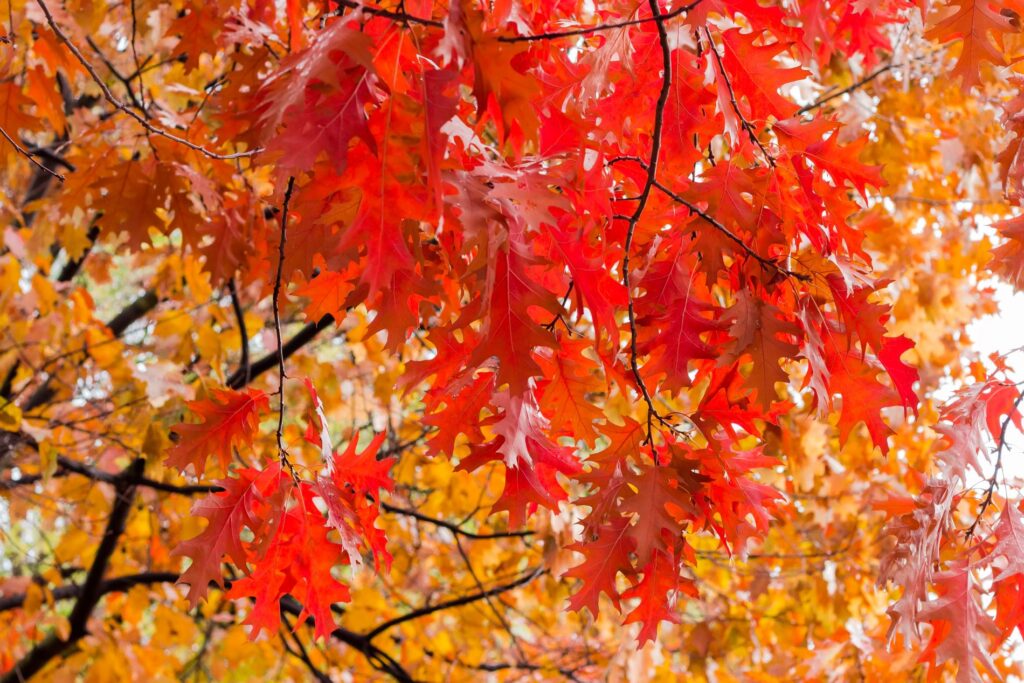
- Zones: 4–8
- Height/Spread: 50–75 ft tall, 50–75 ft wide
- Soil/Water: Average, well-drained soil; medium water
- Bloom: Insignificant, May
- Fall Color: Reddish brown
- Tolerates: Drought, air pollution
- Native Range: Eastern North America
- Look for: ‘Shumard’ as an excellent specimen tree.
Swamp White Oak (Quercus bicolor)
White Oak trees are known for their unusual leaves, which are dark, shiny green on top and silvery white underneath.
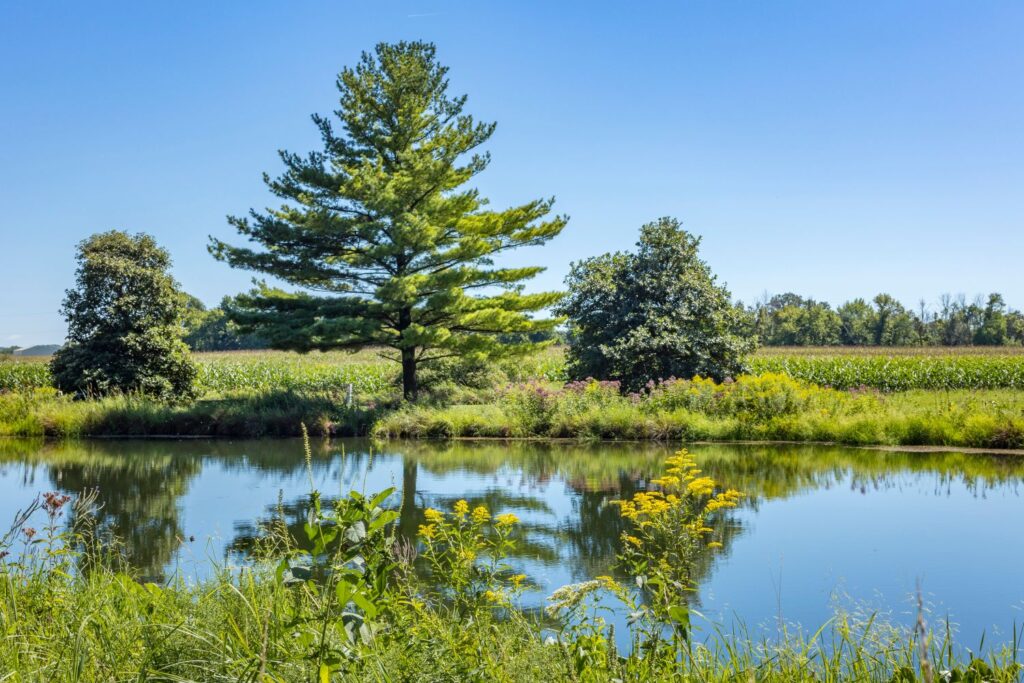
- Zones: 3–8
- Height/Spread: 50–60 ft tall and wide
- Soil/Water: Average, slightly acidic; medium to wet
- Bloom: Insignificant
- Fall Color: Yellow to reddish-purple
- Tolerates: Wet soil
- Native Range: Northeastern North America Swamp
Shingle Oak (Quercus imbricaria)
Distinctive smooth-edged leaves; its acorns are valuable for wildlife.
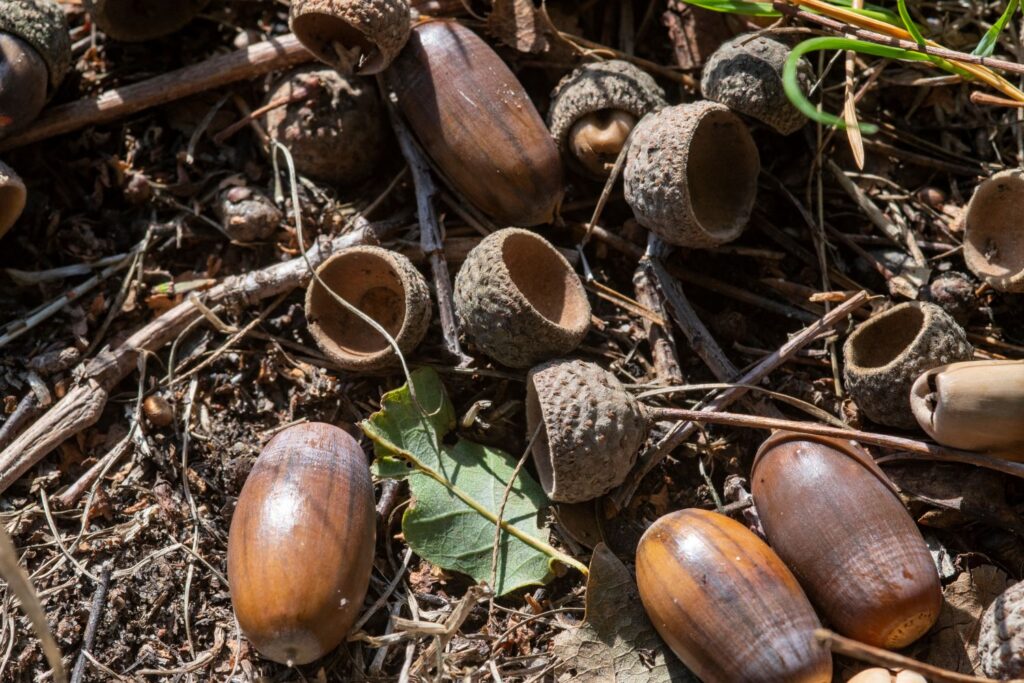
- Zones: 5–8
- Height/Spread: 40–60 ft tall and wide
- Soil/Water: Rich, humusy, well-drained soil; medium water
- Bloom: Insignificant
- Fall Color: Yellow-brown to red-brown
- Tolerates: Drought
- Native Range: Eastern and Central United States
Elm (‘Frontier’) (Ulmus ‘Frontier’)
Compact, urban-tough, and highly resistant to Dutch Elm disease.
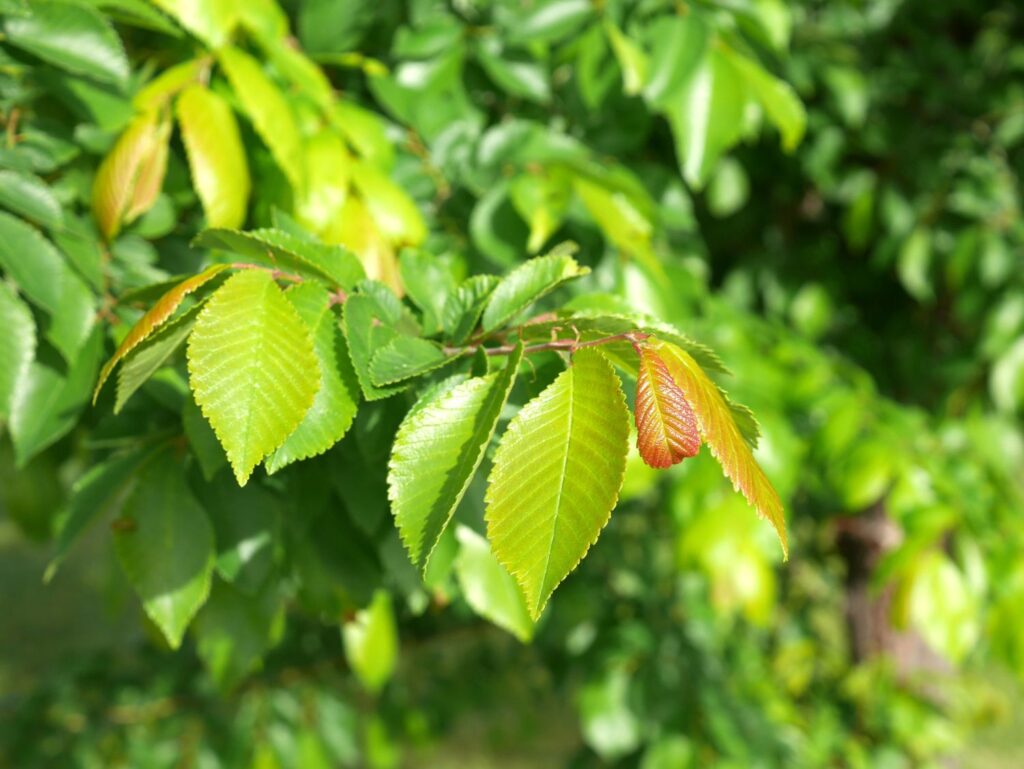
- Zones: 4–10
- Height/Spread: 30–40 ft tall, 20–30 ft wide
- Soil/Water: Average, well-drained; moist to average
- Bloom: Insignificant, rarely flowers
- Fall Color: Reddish-purple
- Tolerates: Urban conditions
- Native Range: Non-native
Bald Cypress (Taxodium distichum)
Striking feathery foliage that turns cinnamon-brown in fall; handles wet or dry conditions well.
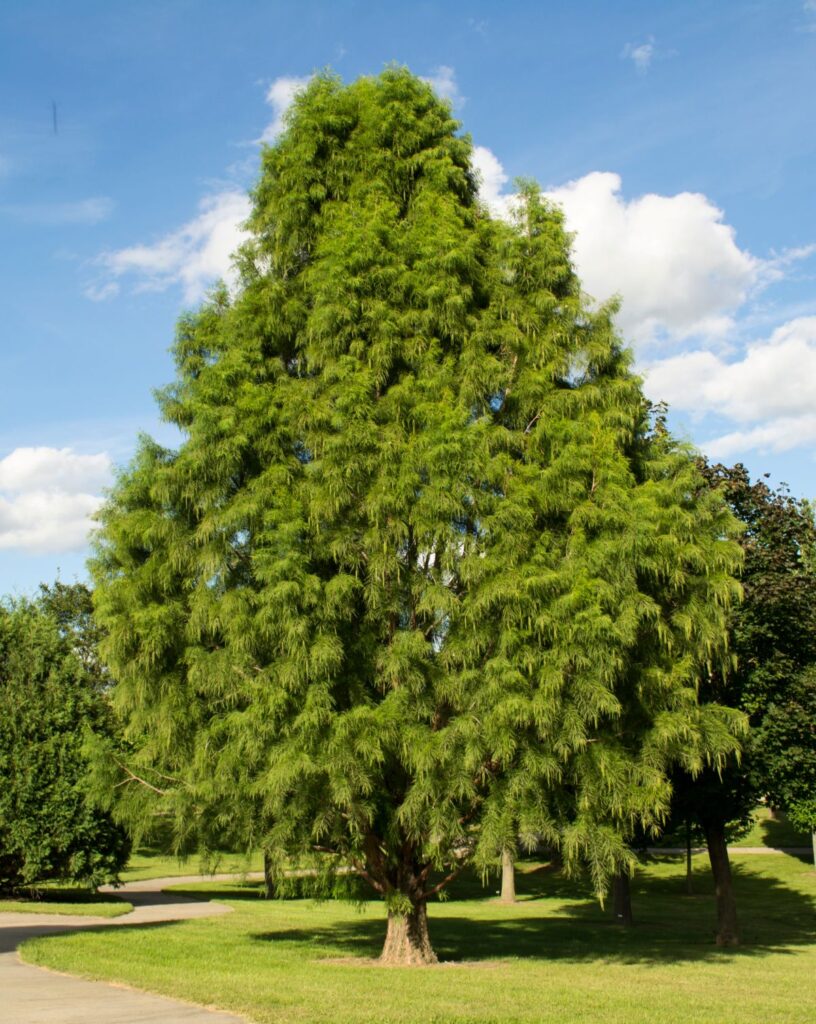
- Zones: 4–9
- Height/Spread: 50–75 ft tall, 15–20 ft wide
- Soil/Water: Sandy, acidic, loamy; medium to wet
- Bloom: Non-flowering
- Fall Color: Orange to cinnamon-brown
- Tolerates: Clay soil, deer, air pollution, drought
- Native Range: Eastern United States
- Look for: ‘Shawnee Brave’ for dense, feathery foliage paired with a more narrow shape than the species variety.
Seven-Son Flower (Heptacodium miconioides)
A smaller ornamental with late-summer blooms and winter bark interest, attracting pollinators.
- Zones: 5–9
- Height/Spread: 6–10 ft tall and wide
- Soil/Water: Average, well-drained soil; medium water
- Bloom: Fragrant white, August–September; followed by red fruits
- Fall Color: Yellow
- Native Range: China
- Look for: ‘Temple of Bloom’ with exfoliating winter bark.
Eastern Redbud (Cercis canadensis)
Beloved for its early spring pink blooms and wildlife appeal.
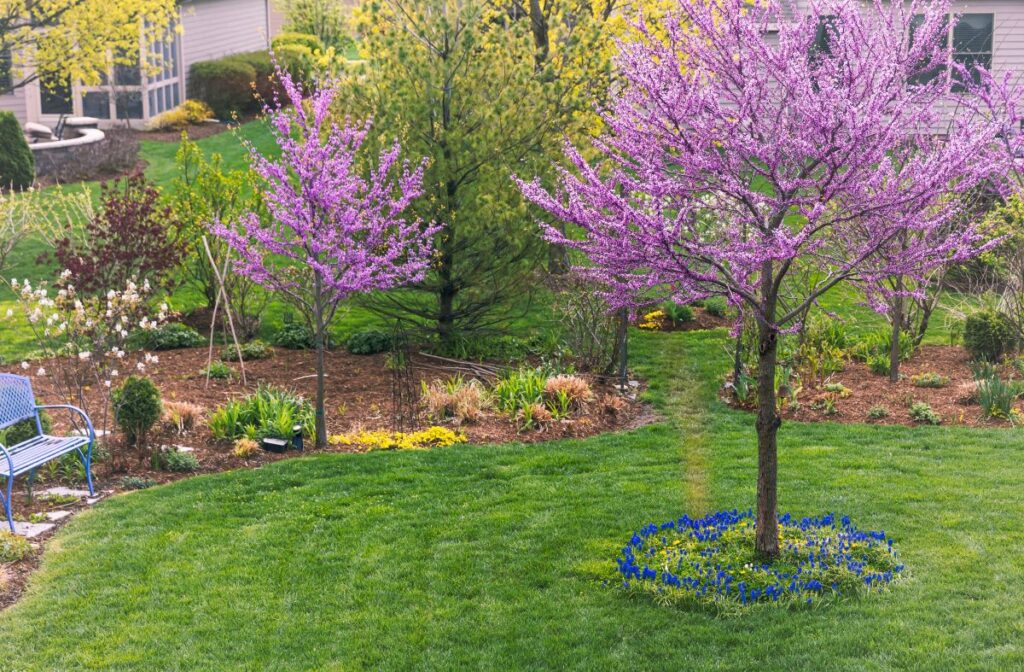
- Zones: 4–8
- Height/Spread: 20–30 ft tall, 25–35 ft wide
- Soil/Water: Average soil; medium water
- Bloom: Pink to reddish-pink
- Fall Color: Yellow to greenish-yellow
- Tolerates: Clay soil; deer resistant
- Native Range: Eastern North America
American Sycamore (Platanus occidentalis)
Towering shade tree with striking exfoliating bark.
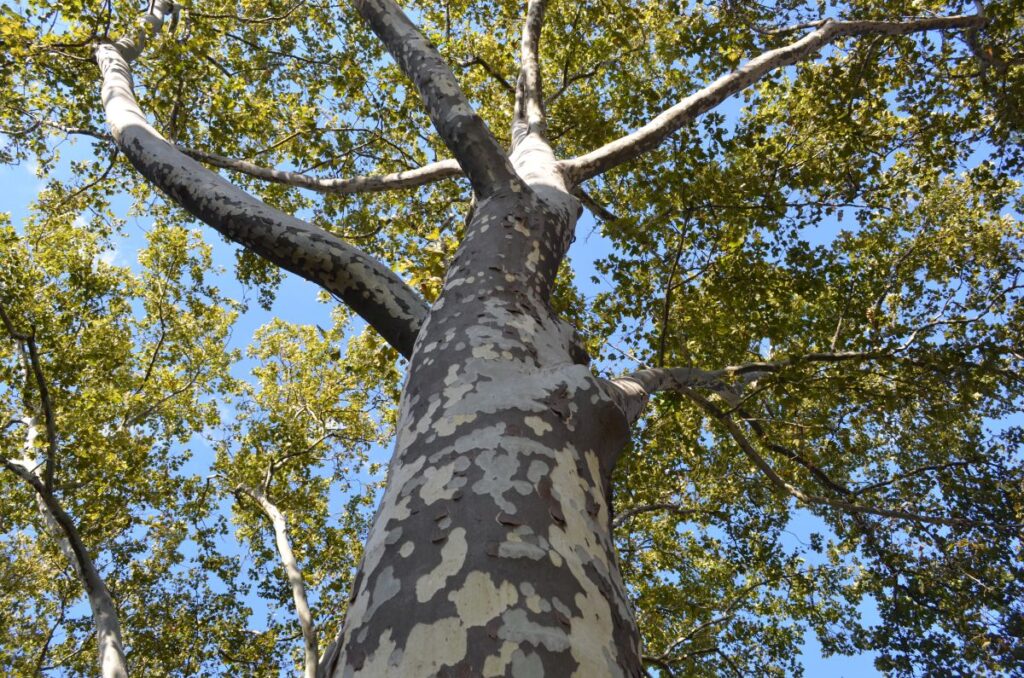
- Zones: 4–9
- Height/Spread: 75–100 ft tall and wide
- Soil/Water: Average, well-drained; medium to wet
- Bloom: Males yellow, females red
- Fall Color: Golden-yellow to brown
- Tolerates: Wet soil, air pollution
- Native Range: Southeastern United States
- Look for: Especially prized for its bark, which exfoliates to show creamy white inner bark.
Hackberry (Celtis occidentalis)
A durable tree for tough sites, with yellow fall color and wildlife-friendly fruit.
- Zones: 3–9
- Height/Spread: 40–60 ft tall and wide
- Soil/Water: Rich, well-drained soil; medium to wet
- Bloom: Greenish blooms; purple fruit
- Fall Color: Yellow
- Tolerates: Clay soil, wet soil, drought
- Native Range: Central and Northeastern North America
- Look for: Great choice for challenging locations.
Burr Oak (Quercus macrocarpa)
Majestic, long-lived, and iconic, with massive acorns that support wildlife.
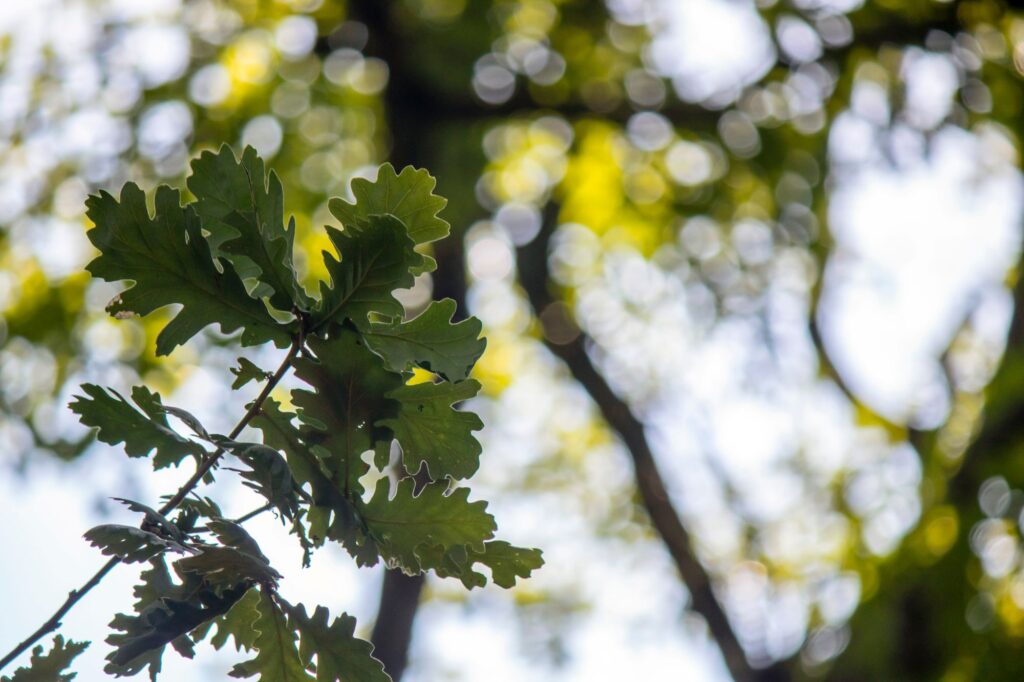
- Zones: 3–8
- Height/Spread: 50–80 ft tall, 40–60 ft wide
- Soil/Water: Average, slightly acidic; dry to medium
- Bloom: Insignificant
- Fall Color: Golden brown to yellow
- Tolerates: Drought, clay soil, dry soil
- Native Range: Northern and Central United States
Washington Hawthorne (Crataegus phaenopyrum)
Compact with glossy green leaves, white spring blooms, and bright red-orange fall color.
- Zones: 4–8
- Height/Spread: 25–30 ft tall and wide
- Soil/Water: Average soil; medium water
- Bloom: Fragrant white, late spring
- Fall Color: Orange and red
- Tolerates: Air pollution
- Native Range: Southeastern United States
- Look for: Can also be pruned into a hedge.
Smooth Sumac (Rhus glabra)
Smaller but bold, with fiery fall colors and berry-like clusters for wildlife.
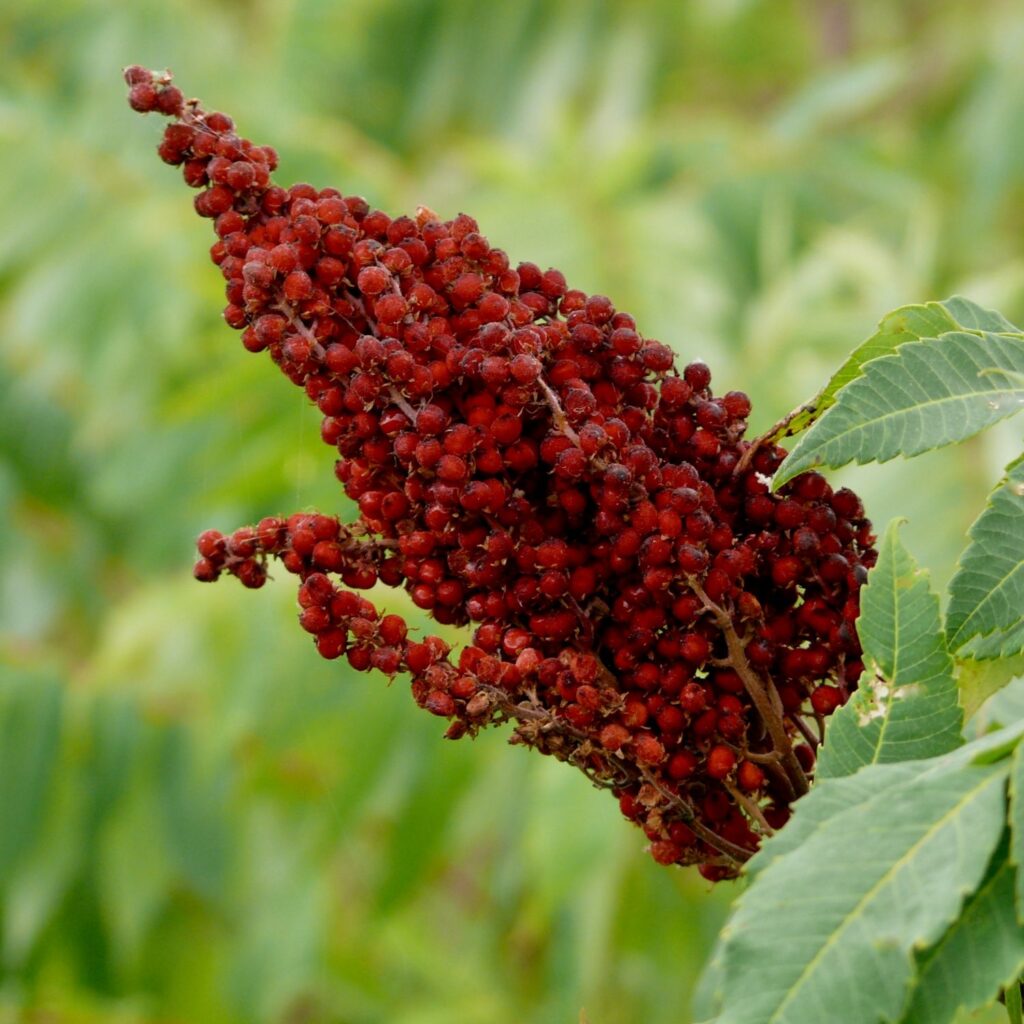
- Zones: 3–8
- Height/Spread: 9–15 ft tall and wide
- Soil/Water: Average, well-drained; dry to medium
- Bloom: Yellowish-green, June
- Fall Color: Orange, yellow, red
- Tolerates: Rocky soil, drought
- Native Range: Northeastern United States
- Glossy green leaves highlight the thorny stems in summer.
- Can be used as a specimen or pruned as a hedge.
By: Sandra Nelson
